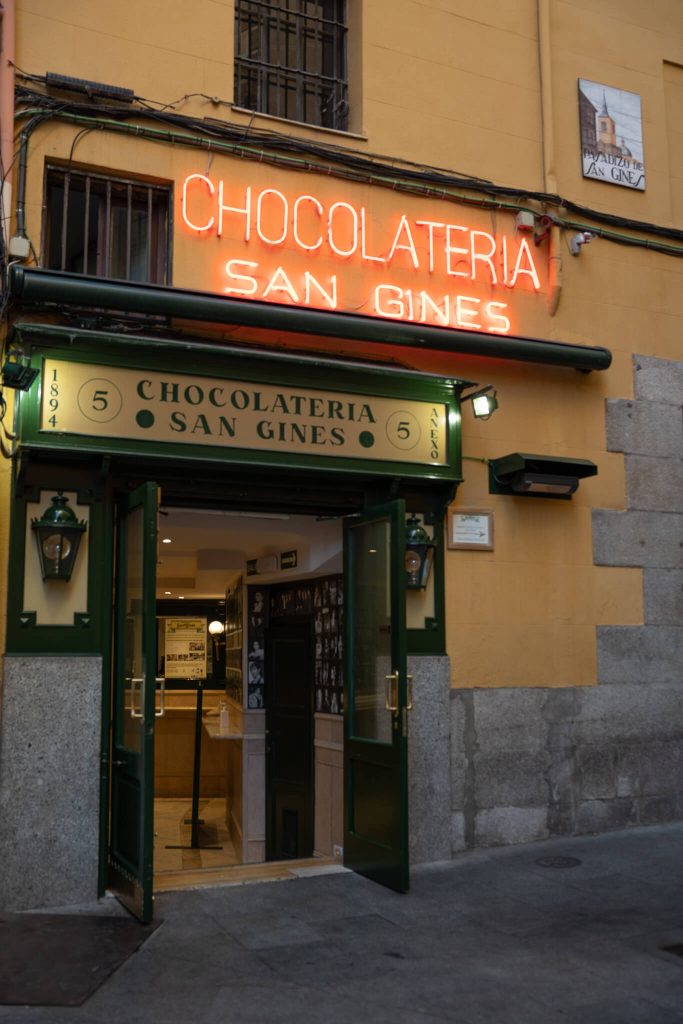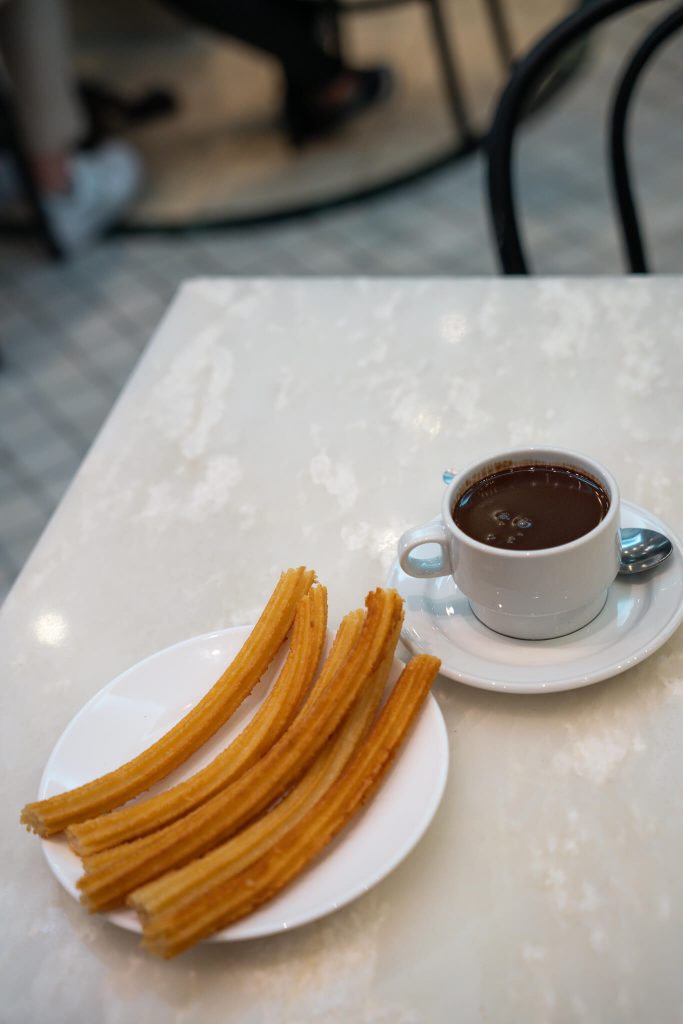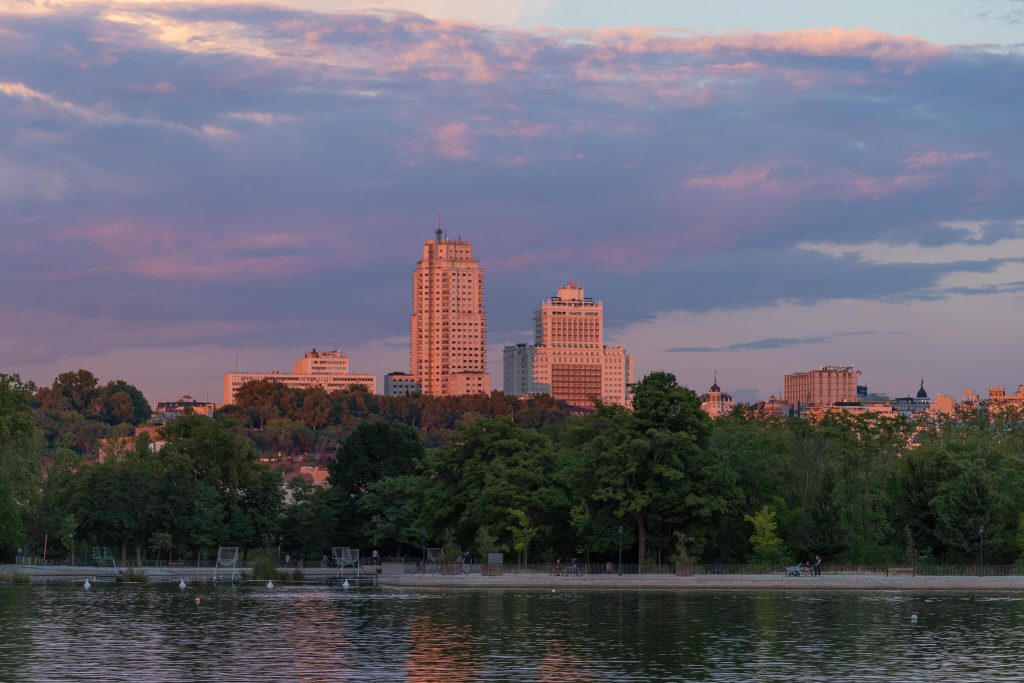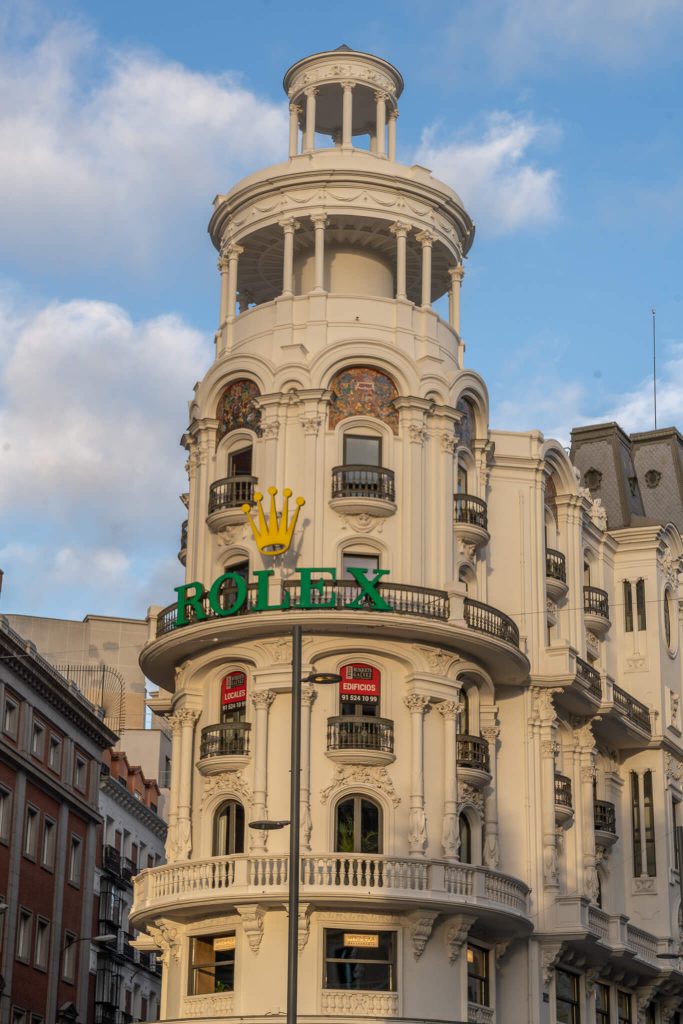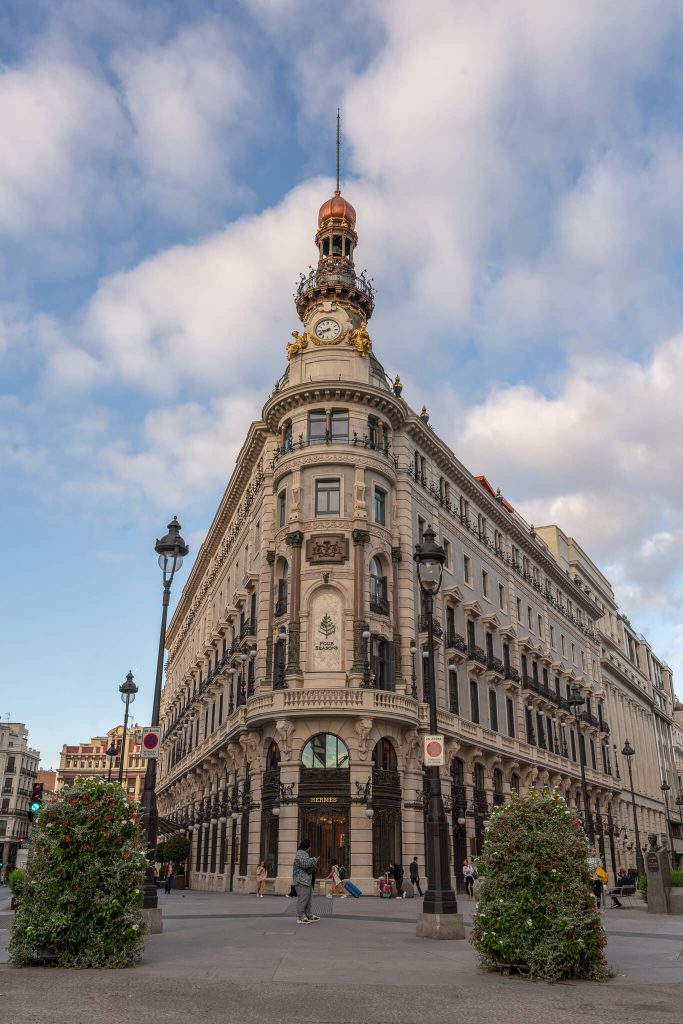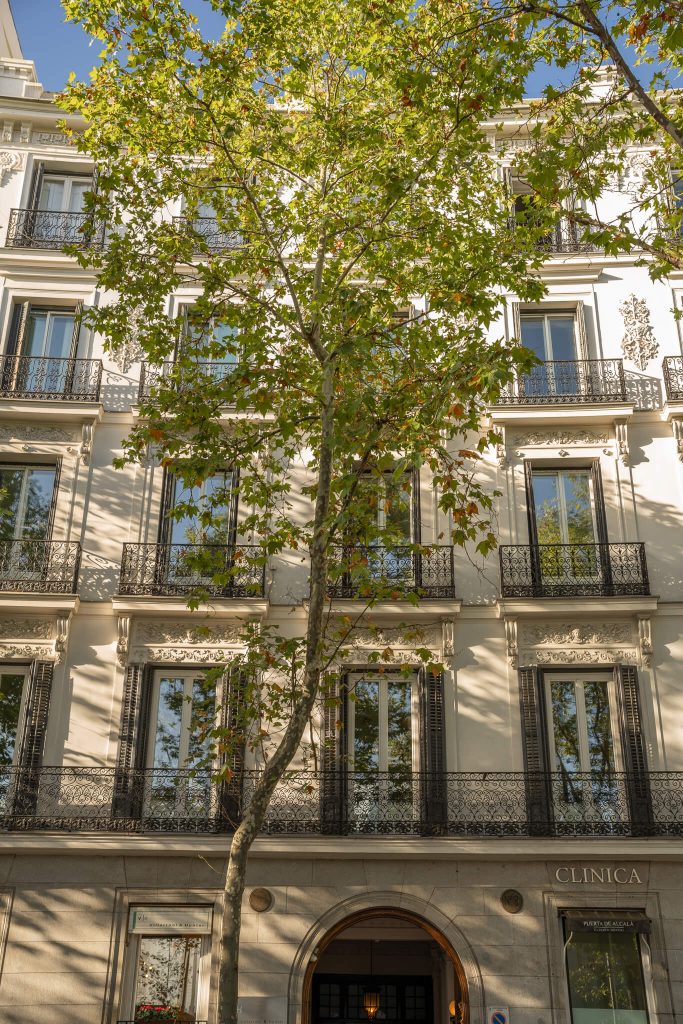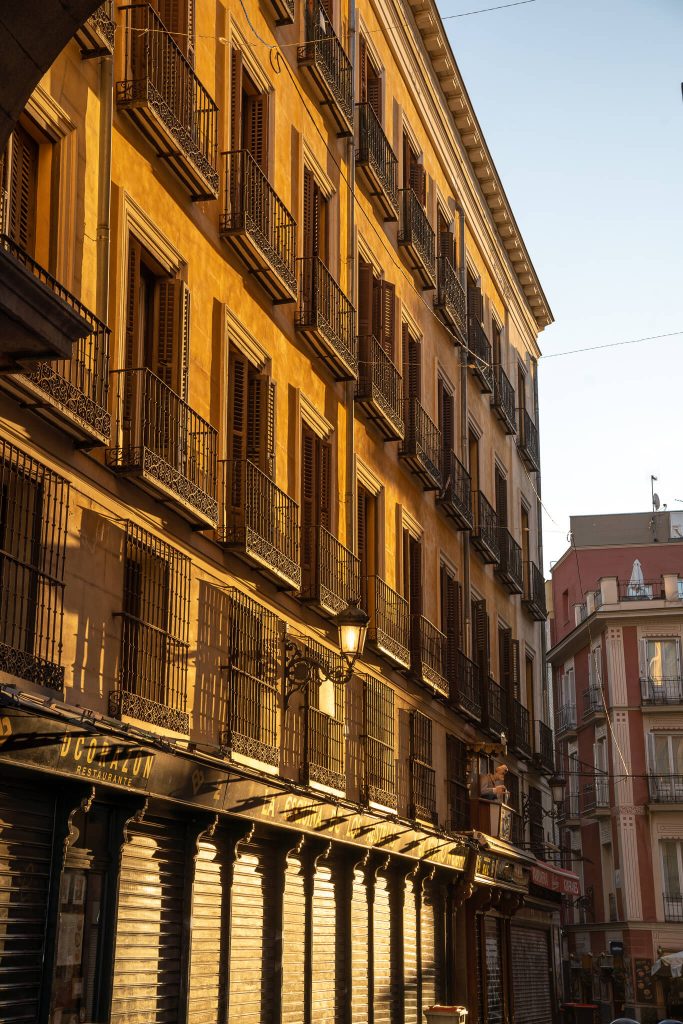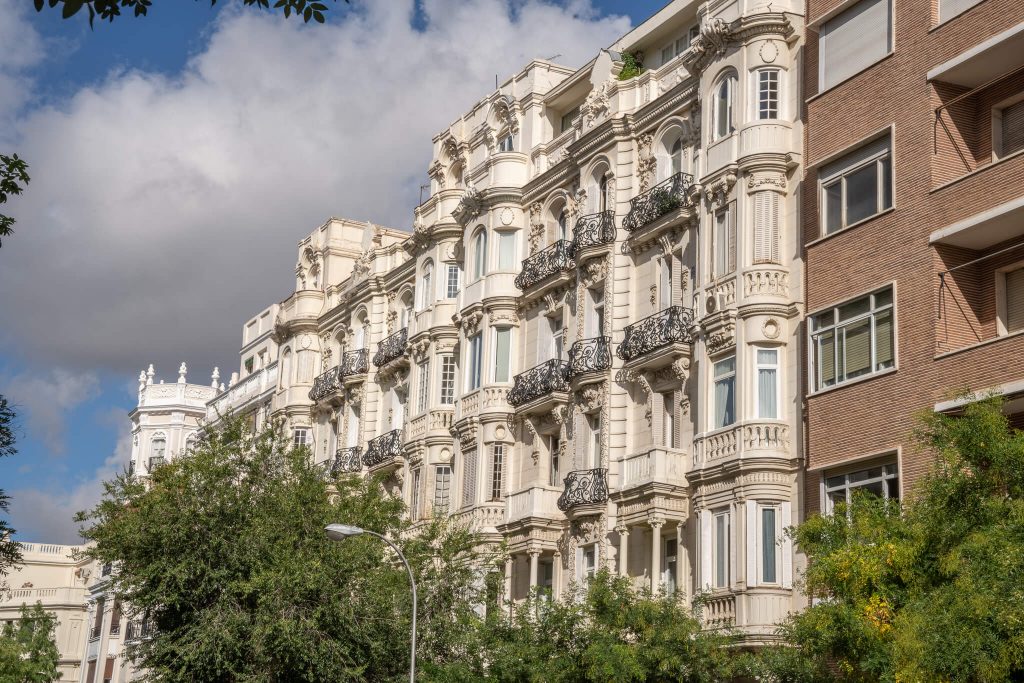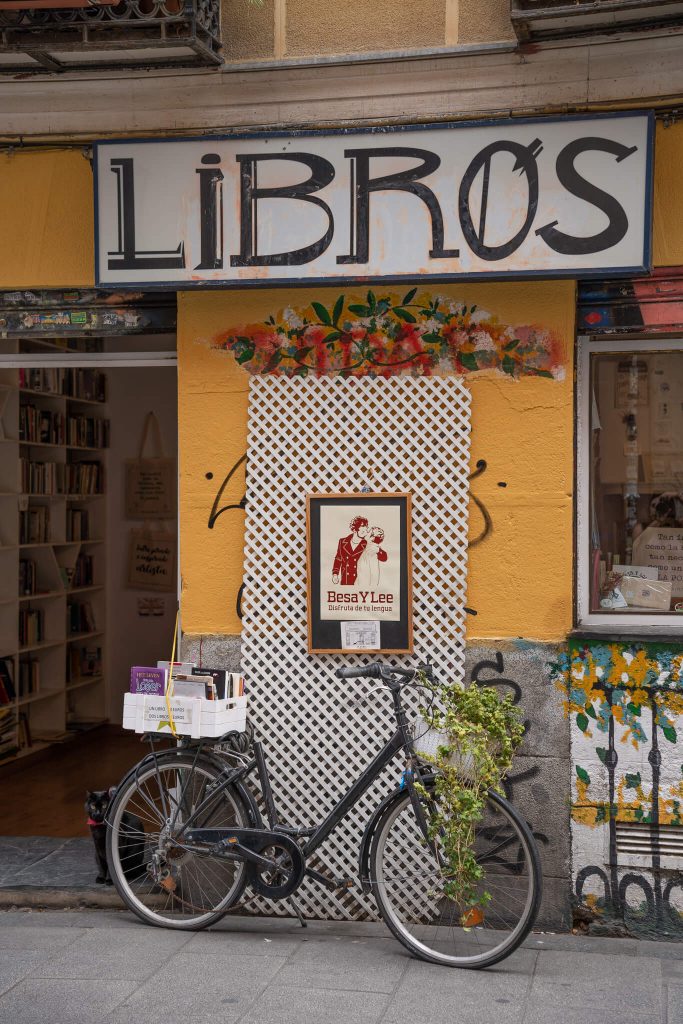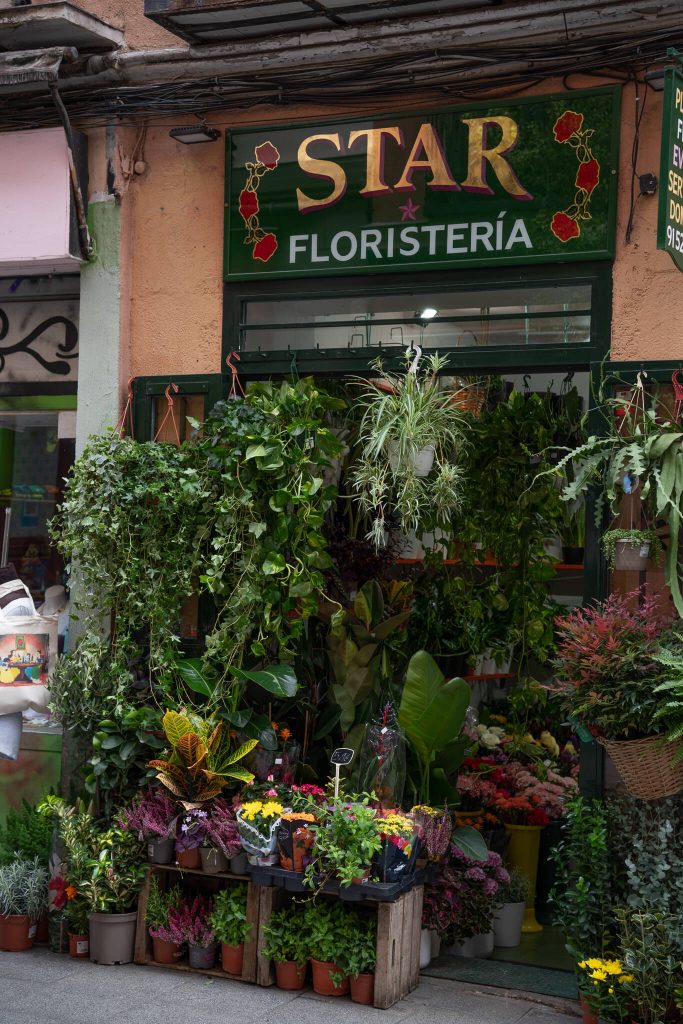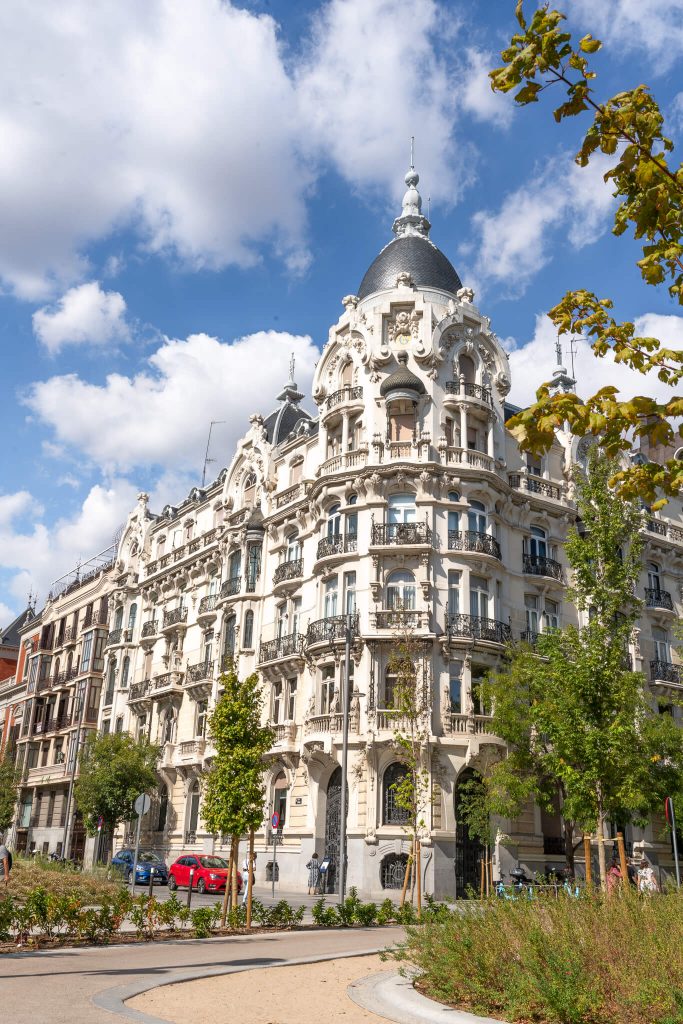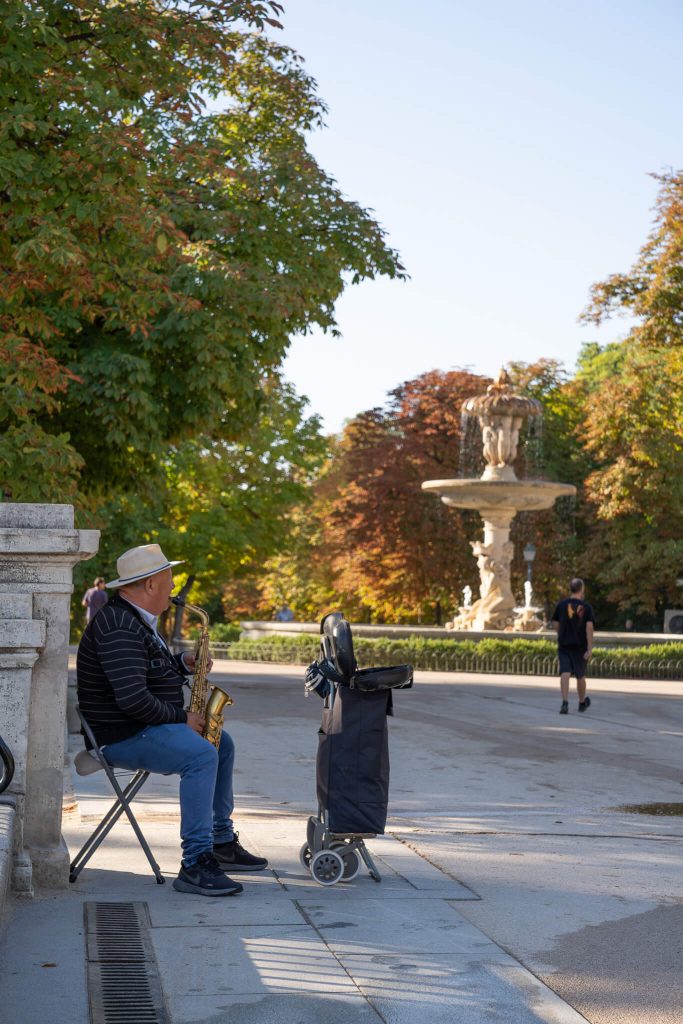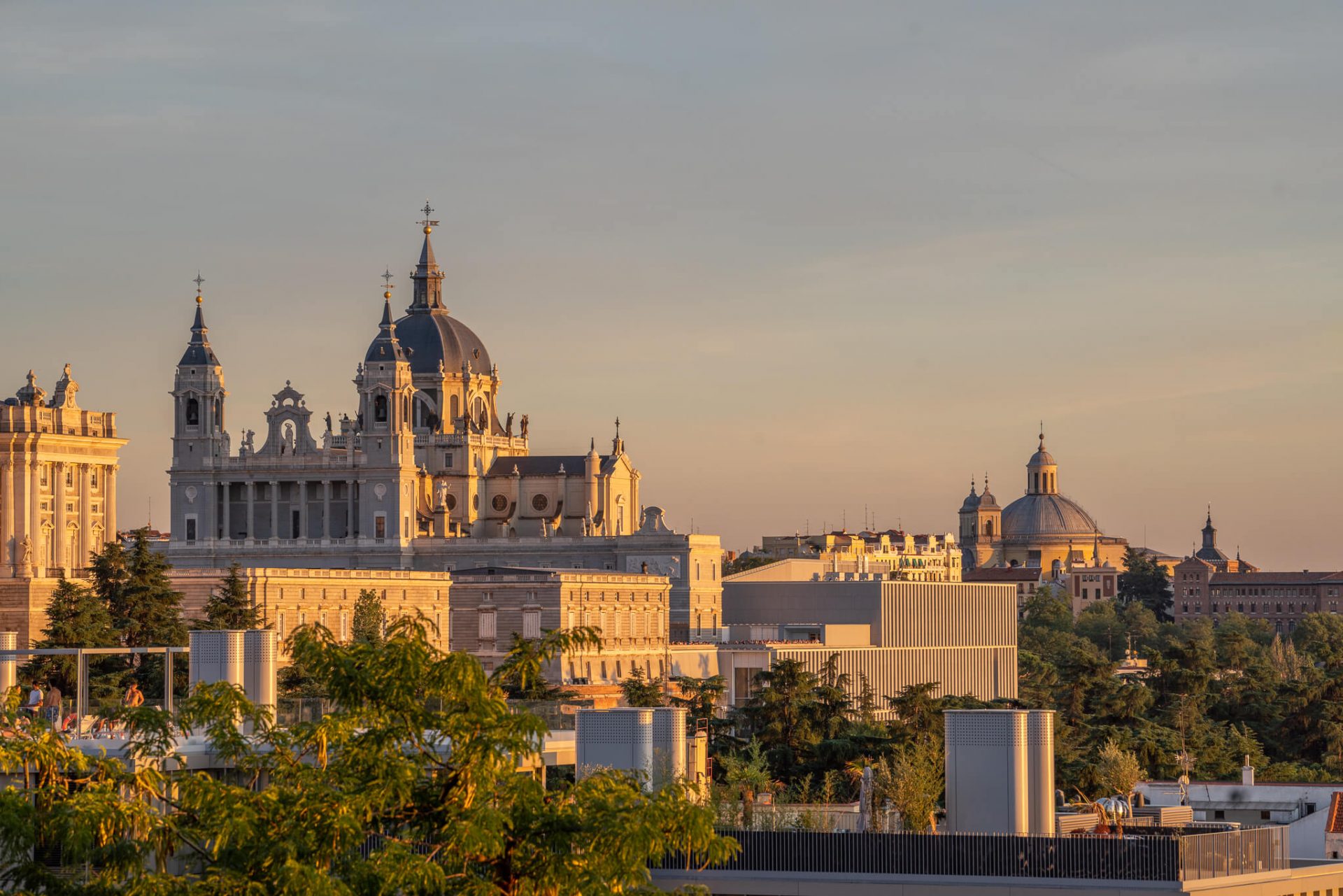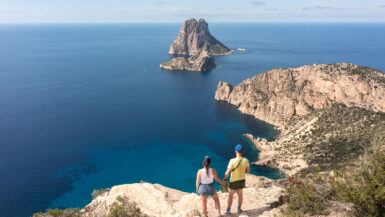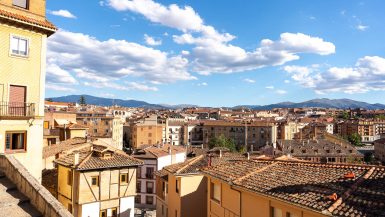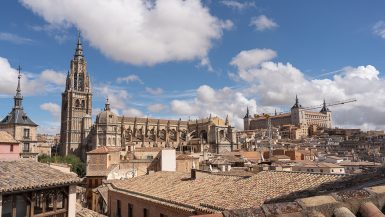Madrid has been on our list for a very long time because we have heard so many good things about it. Aneta was additionally impressed by the series Valeria, shot in Madrid, and then it was certain that sooner or later we would visit the Spanish capital. The city is exactly as great as we imagined, and if you are wondering what to see in and around Madrid, read on!
Royal Palace in Madrid – What to see in Madrid?
A must-see for all visitors in Madrid is the Palazio Real de Madrid, or the Royal Palace, as well as the Cathedral de la Almudena located right next to it. The Royal Palace is one of the few active and official residences of heads of state in Europe open to the public. We missed visiting the Palace itself because we were in two other royal palaces near Madrid.
The palace can be visited at certain times, and from Monday to Thursday between 4:00 PM and 6:00 PM, you can enter it for free. You can find more about the palace and admission tickets here. It is best to approach the palace in the early morning when there are no crowds of tourists there yet.
Behind the palace are the Campo del Moro gardens and on the right the Jardines de Sabatini. Both gardens are free to enter and are worth visiting if you like green oases in the urban jungles!

Plaza Mayor – What to see in Madrid?
Plaza Mayor is nothing more than the Madrid square, built on a rectangular plan and surrounded by beautiful tenement houses with arcades under which you can shelter on a warm day. It is worth going there early in the morning before the tourist invasion starts. Generally, the locals warn against bars and restaurants in this area, because they are touristic and expensive, but we recommend the Museo del Jamon chain store for aficionados of Spanish hams. The prices in the Museo Plaza Mayor are the same as in any other location of this store in Madrid.
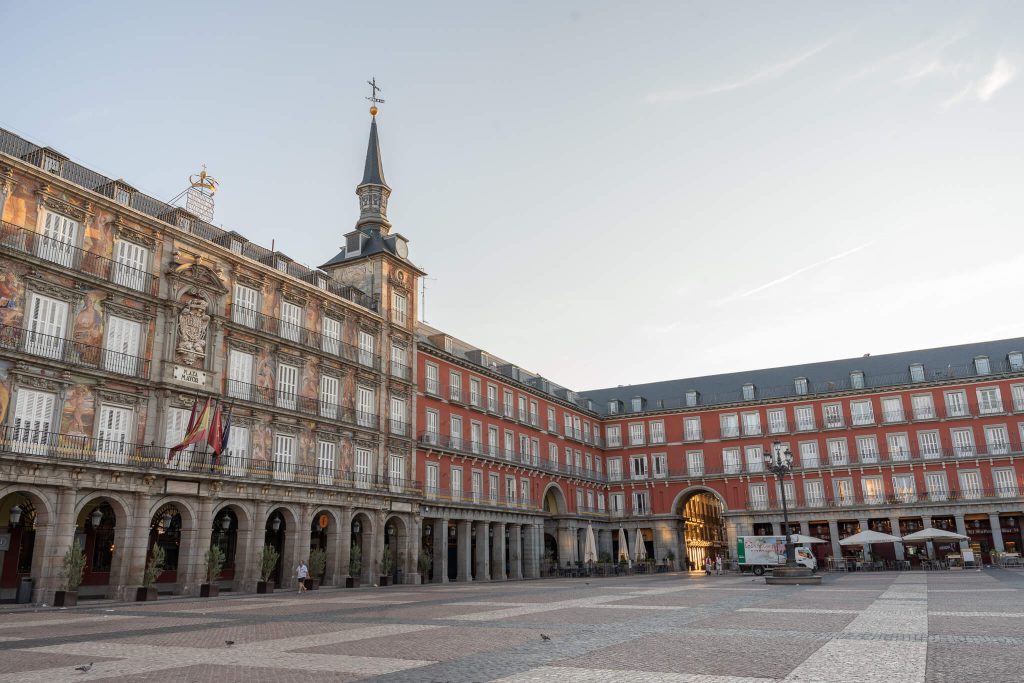
Mercado de San Miguel – What to see in Madrid?
A market located two steps from Plaza Mayor. Built-in 1906 with the original iron structure from the 20th century preserved, renovated a few years ago by private investors and reopened to the public in 2009. Madrid is a city of fairs, you will find a lot of them there and I must admit that San Miguel is a really visually beautiful place.
However, it is a typical tourist destination, there are restaurants inside, but the locals do not buy products for dinner there, because there are few such stands, and the prices are high. Although the door from our apartment was literally in front of the market, we didn’t try anything there ourselves, because huge queues and crowds (even late in the evening) discouraged us. We recommend having a look, but go to another location for food!
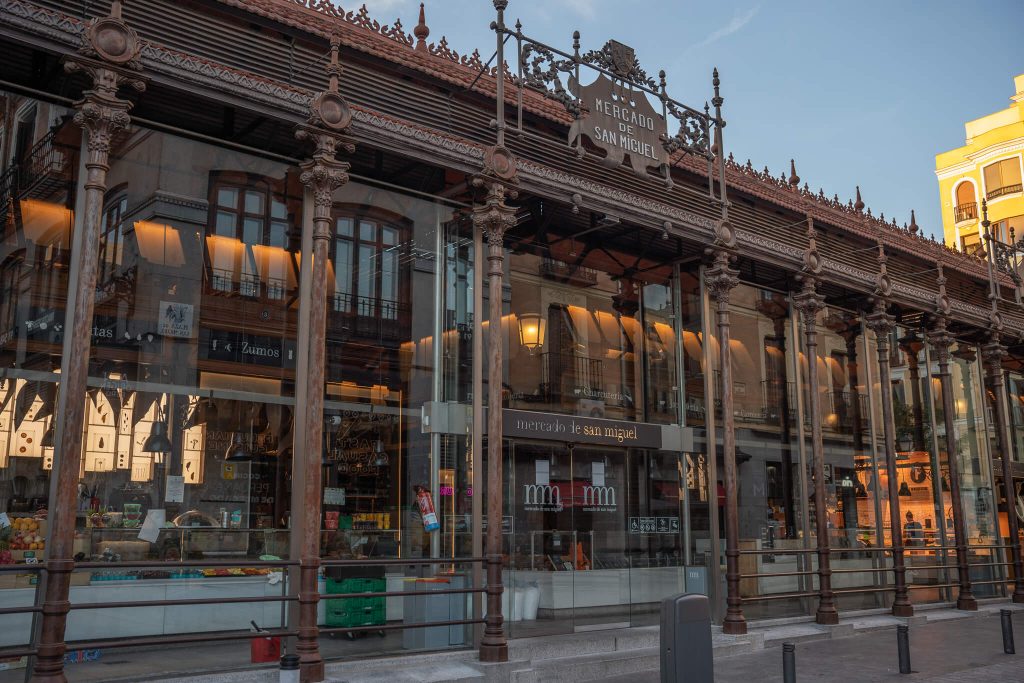
Puerta del Sol – What to see in Madrid?
Puerta del Sol means nothing else but the gate of the sun, it is one of the most important squares in Madrid. However, it is not a closed square, like Plaza Mayor, but one with a constant flow of people, there is also one of the most important metro stations. The most important building in the square is the Real Casa de Correos, or Royal Post House, where the council of the Autonomous Province of Madrid meets.
In this area, it is practically packed with people all day, counterfeit sellers set up their mobile “shops” there (and they often also roll them up and run away from the police, as we have seen many times), in this crowd it is worth keeping an eye on your belongings and watch out for pickpockets. Unfortunately, during our stay, there was a renovation and practically the whole square was under construction and separated from the pedestrian’s pavements.
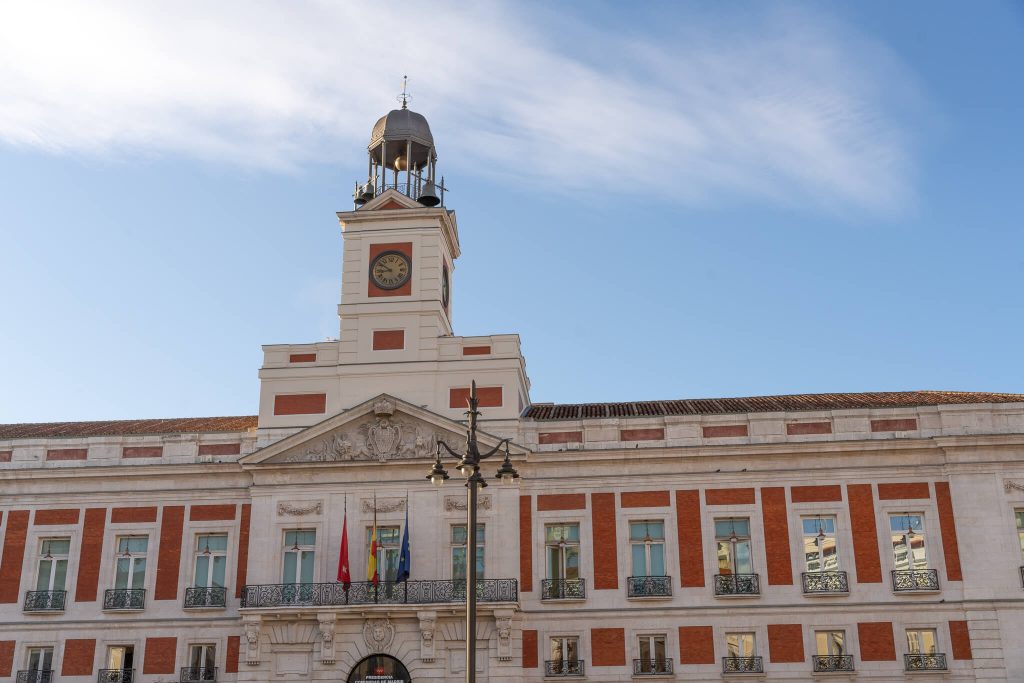
Gran Via – What to see in Madrid?
The most famous street in Madrid, where there are a lot of shops, including the most luxurious ones. The section from Piazza di Spagna to Piazza Callao reminded us a bit of Broadway in New York due to the high concentration of theatres showing, among others, musicals.
While walking around Gran Via, it is worth stopping at the aforementioned Callao Square, one of the most important in the city, from which you will see the photogenic Edificio Carrión building with the Schweppes inscription on the corner, a bit further there is the Cine Capitol cinema with a retro neon sign above the entrance to the cinema.
Another photogenic place is the crossing of Gran Via with Calle de Alcala, where there are two buildings rounded on the corner – the extremely monumental Metropolis (unfortunately it was under renovation during our visit …) and Grassy with a Rolex neon sign. They look even better from the rooftops – Círculo de Bellas Artes (admission 5e) and the rooftop at the Principal hotel, which we were not allowed to enter (we assume that it depends on the mood of the security guard downstairs …).
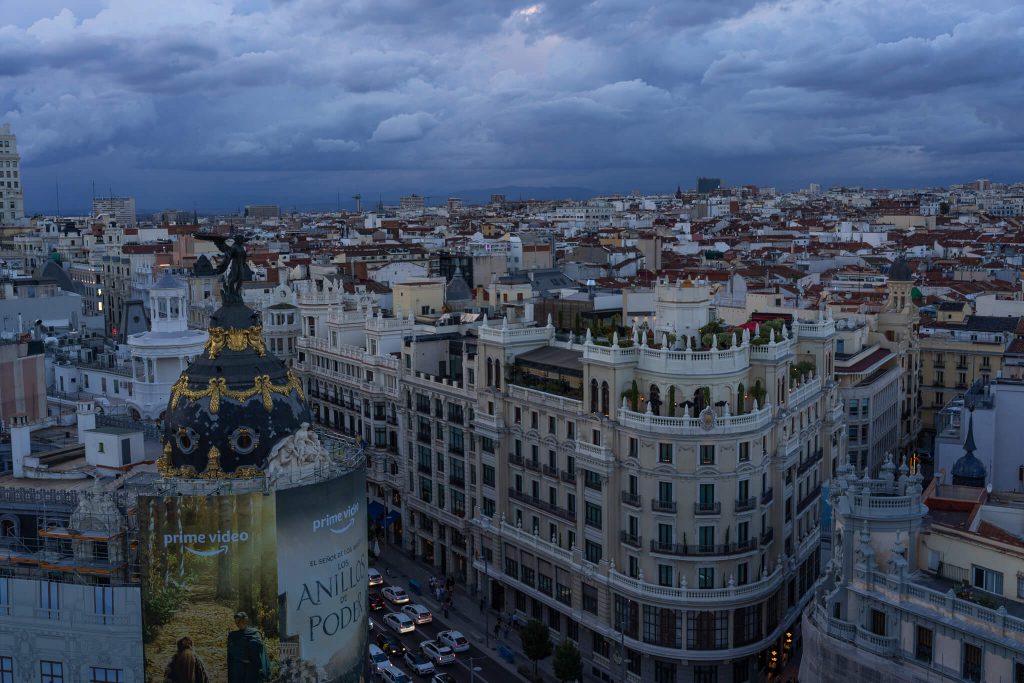
Retiro Park – What to see in Madrid?
A park loved by both locals and tourists. It belongs to the category of neat and orderly ones, entering from the Puerta de Alcalá triumphal arch, one of the first places on the way is the Estanque Grande de El Retiro lake, where you can go boating. The impressive monument of King Alfonso XII towers over the lake. Throughout the park, you will meet a lot of street musicians with accordions or saxophones, whose music reaches every corner of the park and gives the place a unique atmosphere.
Being in Retiro Park, you cannot miss the Crystal Palace, built in 1887 for the Spanish expo. It is located by a small lake with a fountain, you can enter inside for free. Next to the Retiro Park is the famous Prado Museum, a treat for art lovers, as well as the Royal Botanic Gardens, which we skipped because not many flowers bloom in September.
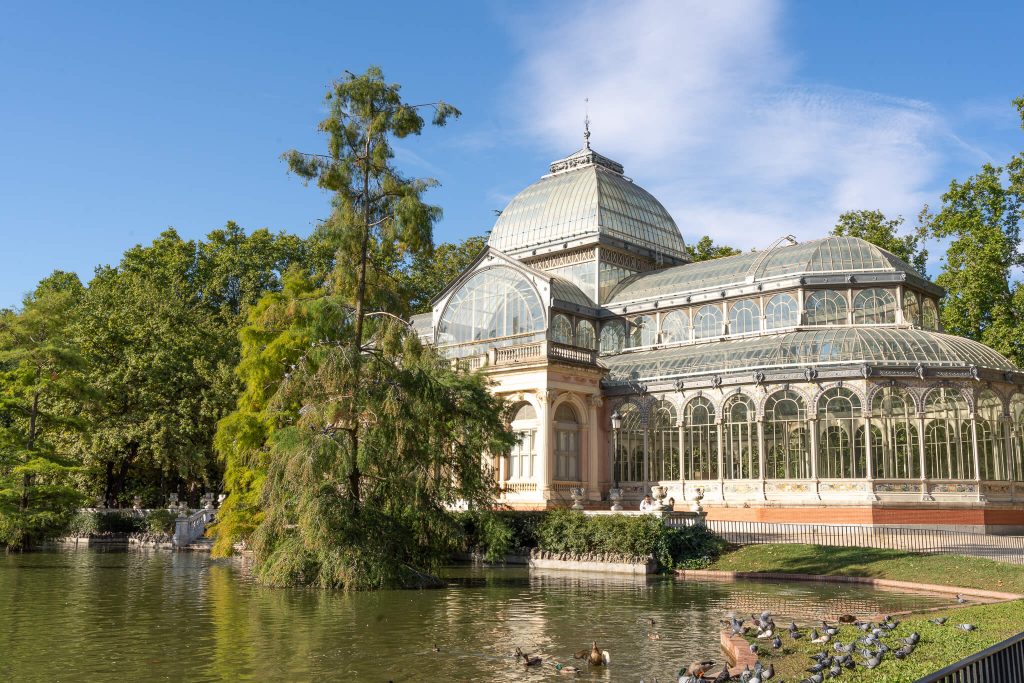
Cibeles Fountain and Palace – What to see in Madrid?
On your way to Retiro, be sure to stop at the busy intersection where the Cibeles Fountain is located and the Cibeles Palace towers over it. The architecture of the palace is truly amazing, in the past it housed the main post office and telephone centre, and now it is the location of the city council and serves as the Town Hall.
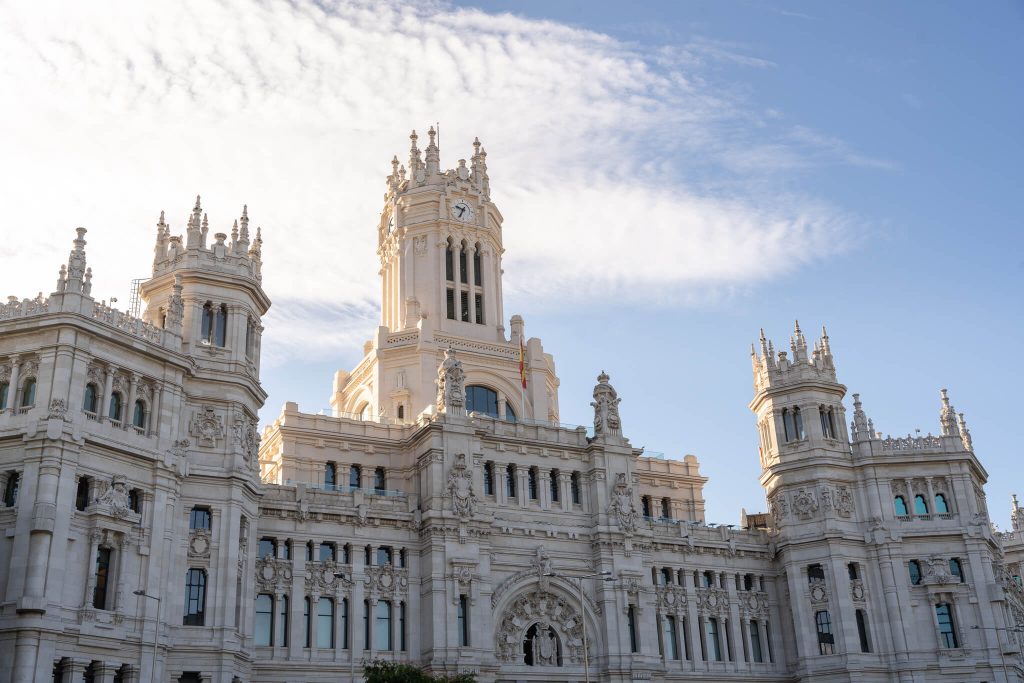
Barrio de La Latina – What to see in Madrid?
The Barrio de La Latina is located in the heart of Madrid and is a very pleasant neighbourhood to walk in the city’s historic quarter. La Latina is located on the site of the historically oldest part of Madrid, named after the La Latina Hospital located there. Although the district itself happened to be in on the site of an ancient city, the modern buildings themselves come from the nineteenth century.
Embajadores – What to see in Madrid?
While walking around La Latina, we practically do not notice when we go to the Embajadores district, which has buildings and climate similar to La Latina. The streets of both districts gently descend towards Ronda de Toledo. The Embajadores district is home to the El Rastro flea market on Sundays. The market takes up the streets of literally half of the district, you will find there stalls with antiques and other old stuff, as well as stands with books or clothes. The Mercado de San Fernando market is also located in this district.
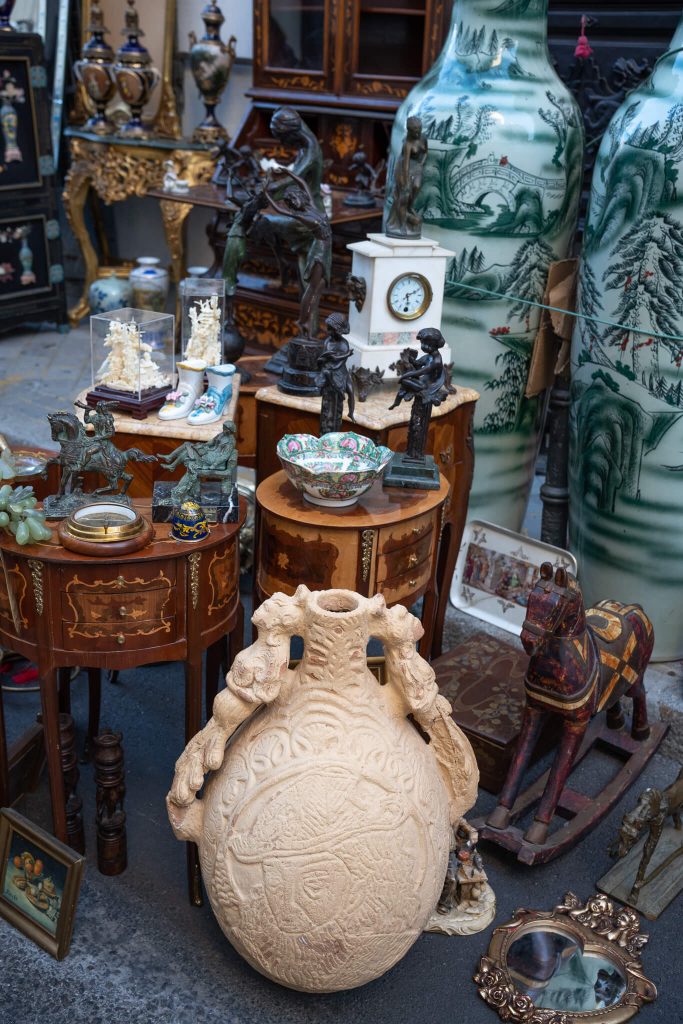
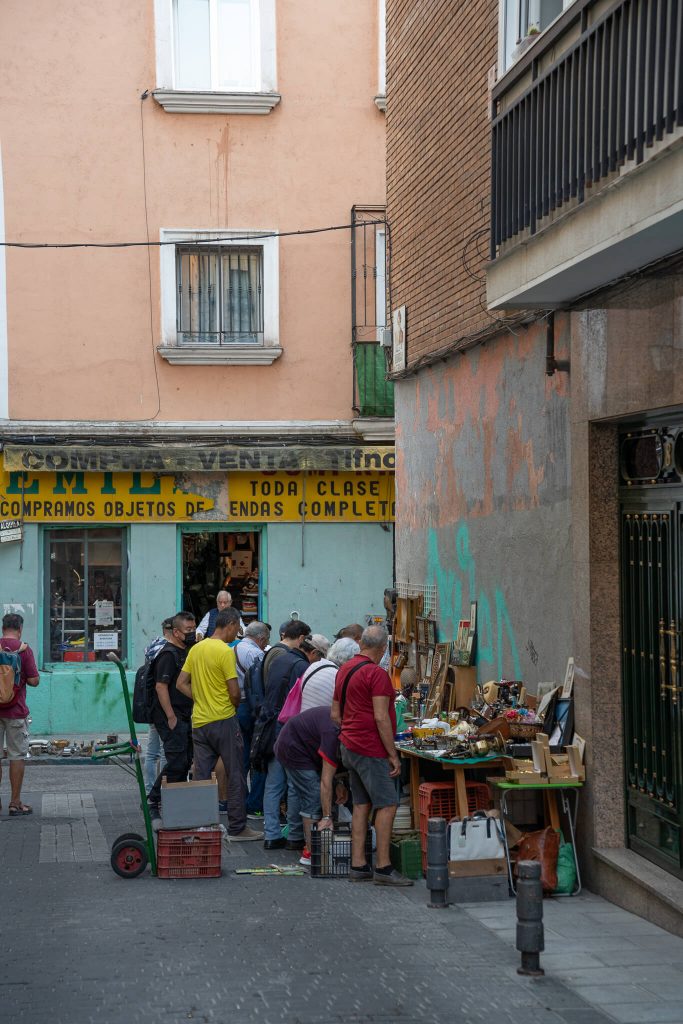
Lavapies – What to see in Madrid?
Walking from the west of La Latina through Embajadores you will come to another pleasant neighbourhood full of charming streets and trees. Entering the streets you will quickly forget that you are in such a popular place as Madrid. If you get hungry, go to the Mercado Antón Martín market, where you can also buy fruit, vegetables, ham, cheese and many other products to prepare your own lunch or dinner.
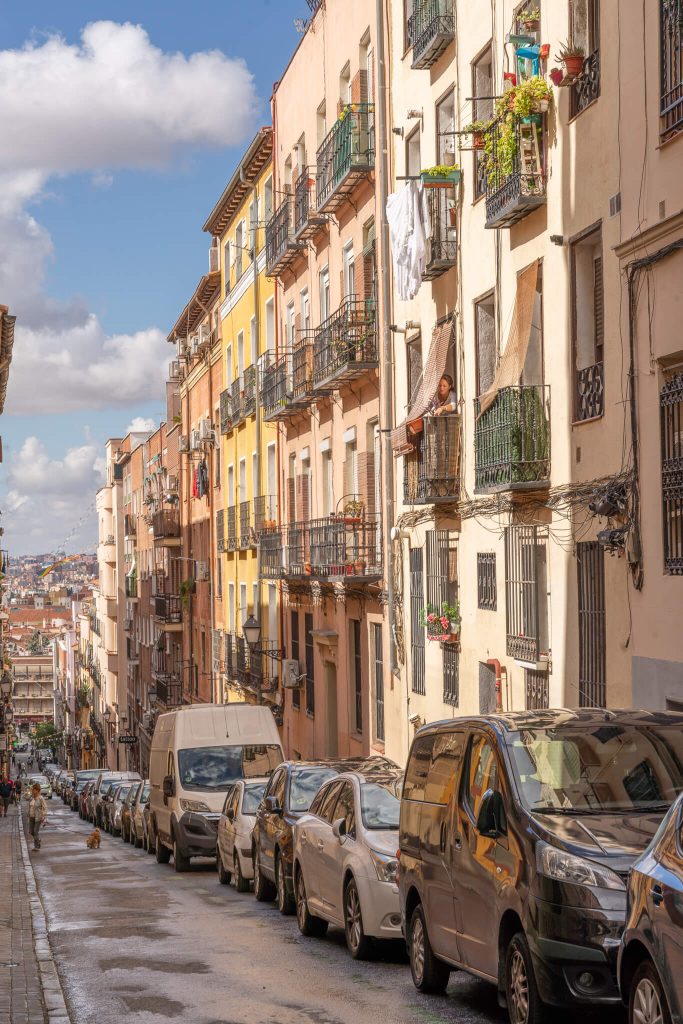
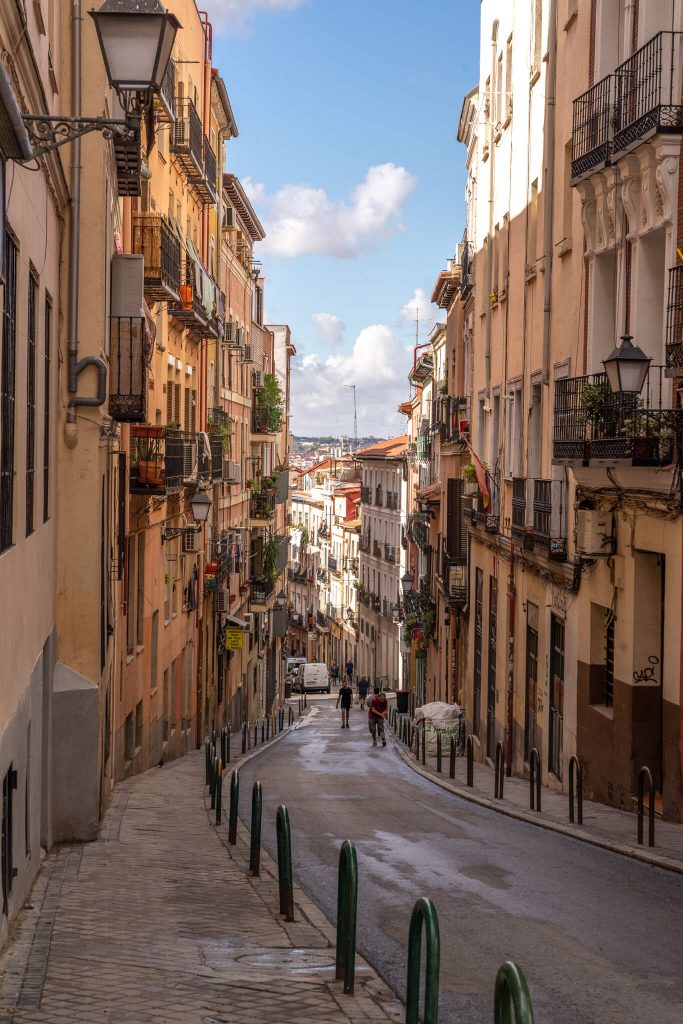
Estacion de Atocha – What to see in Madrid?
Madrid’s main train station is truly remarkable, although the exterior of the building may not necessarily indicate it. The station is the largest railway junction in the country. Inside there is a real jungle, at the station, there is a kind of botanical garden open to the public, which makes a huge impression. The garden was opened in 1992.
The station also houses a monument to the victims of the 2004 bomb attacks, when 192 people died as a result of explosions on trains, the attacks were organized by an Islamic terrorist unit. For this reason, when getting on the train at Atocha station (but also in Toledo and probably many other places) you have to pass a security check similar to the one at the airport.
If you plan to buy train tickets, we recommend that you come in advance (the queues do not end there!), And it is best to buy them from the machines. You will need the data from your passport to purchase (ID did not work), and after a bit of struggle, you will save a lot of time. However, if you want to stand in line, you must first go to the machine to get your number and wait until you are called to the window.
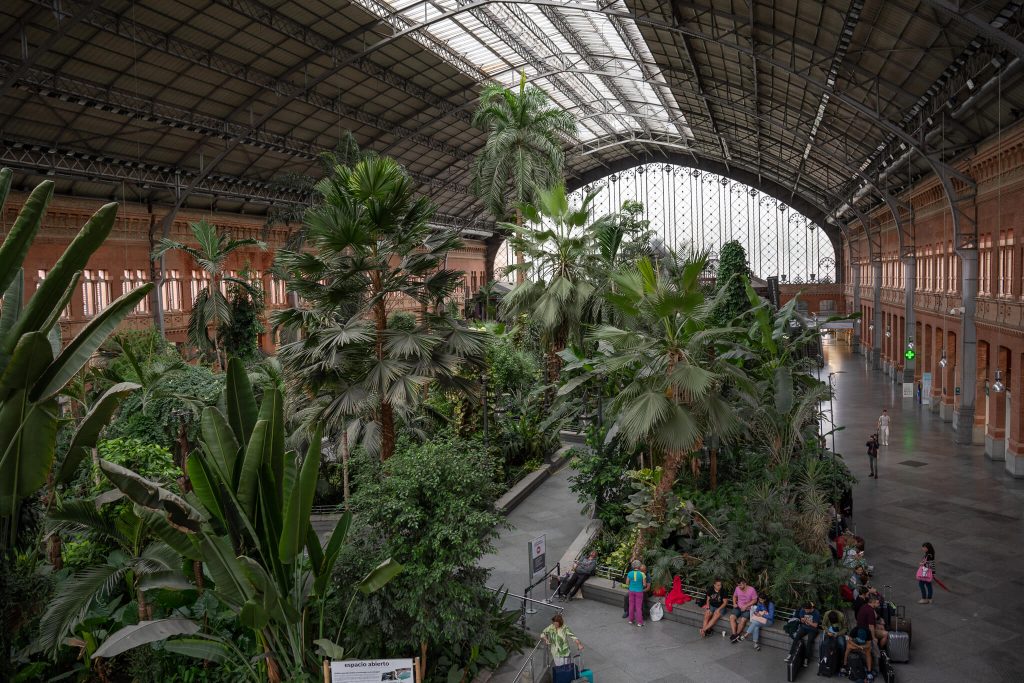
Casa de Campo Park – What to see in Madrid?
Casa de Campo Park is significantly different from Retiro Park. It is huge! Even New York’s Central Park is far behind. In some places, Casa de Campo looks more like an out-of-town area or a forest than a park. A great place for long runs or cycling. There is a cable car from where you can admire the park and the panorama of Madrid. Near the entrance to the park, there is a lake with a lot of bars and restaurants around it, life is vibrant there both during the day and in the evenings.
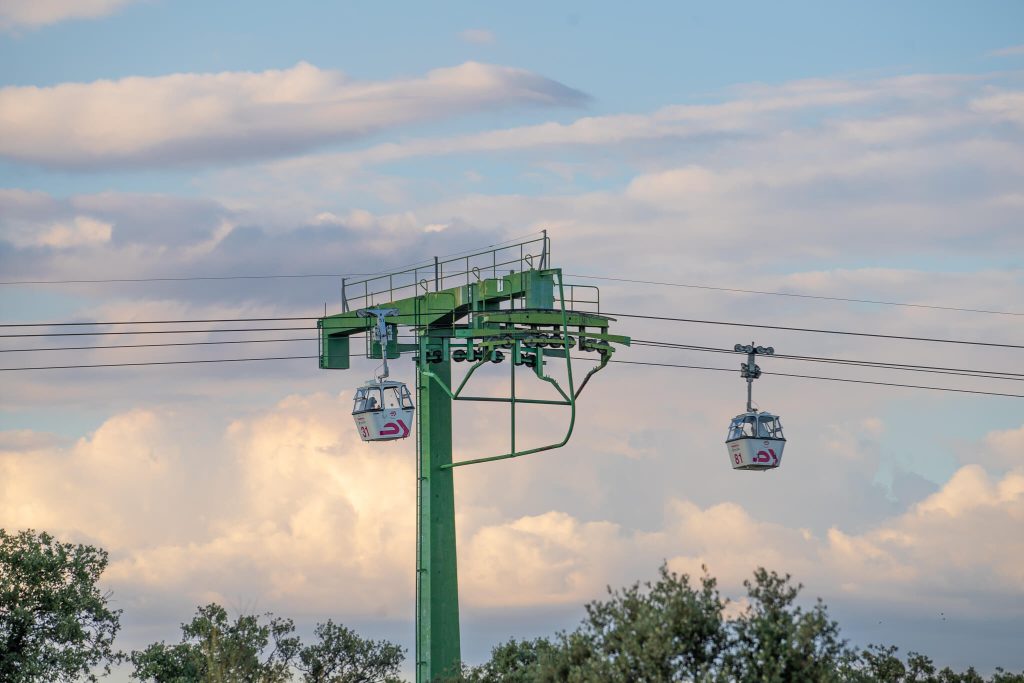
Principe Pio and the Temple of Debod – What to see in Madrid?
Principe Pio is a small hill near Piazza de Espana and the Royal Palace, which is a nice vantage point over the Palace. To capture a good shot, you have to do a bit of work, because some of the views are obscured by trees. On the hill, there is also the ancient temple of Debod, donated to Spain by Egypt. The temple was a gift given as a thank-you for the efforts of the Spanish government to save the temples in Nubia.
Plaza de Espana – What to see in Madrid?
One of the most representative squares in the city, which is the culmination of the famous Gran Via street. Interestingly, the square is characterized by very modern landscape architecture, it is full of wildflower meadows, pocket gardens and trees. The Riu Plaza hotel towers over the Spanish Square, on top of which there is a rooftop bar called 360 °, which overlooks the panorama of Madrid. Although the rooftop itself is really worth visiting, it is good to know that the entrance itself, regardless of the desire to order drinks or food, is as much as 10e per person.
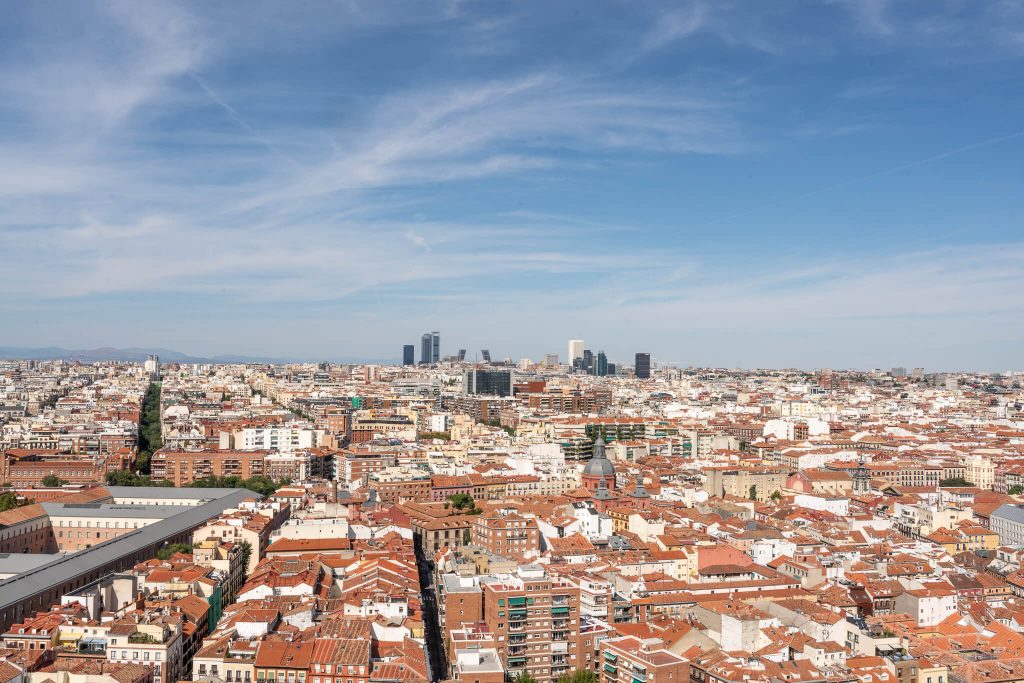
Malasana – What to see in Madrid?
Nice neighbourhood just north of Gran Vía and close to Piazza di Spagna. Colourful, and full of locals, great bars and cafes. Perfect area to get lost and observe daily life as well as discover new venues. In this district, there is a Mayan square – Plaza del Dos de Mayo, where locals happily spend their time in many bars
Chueca – What to see in Madrid?
From the Malasana district, you can very smoothly cross to the nearby Chueca. It is a trendy, bustling neighbourhood dubbed ‘gay friendly’ which you can really feel – LGBTQ + community flags are on every corner, and the rainbow background is even displayed on the Chueca metro sign. Exploring the streets of Chueca, do not miss Plaza de Chueca, which is bustling with life.
Right next to it is the Mercado San Antón market, which we liked the most. All stands have signs in the same, consistent style, and inside you will find more restaurants than shops selling food. There is a restaurant 11 Nudos on the roof, we don’t know if they feed well, but it’s a great place to relax after a meal and drink Sangria or Spanish beer!
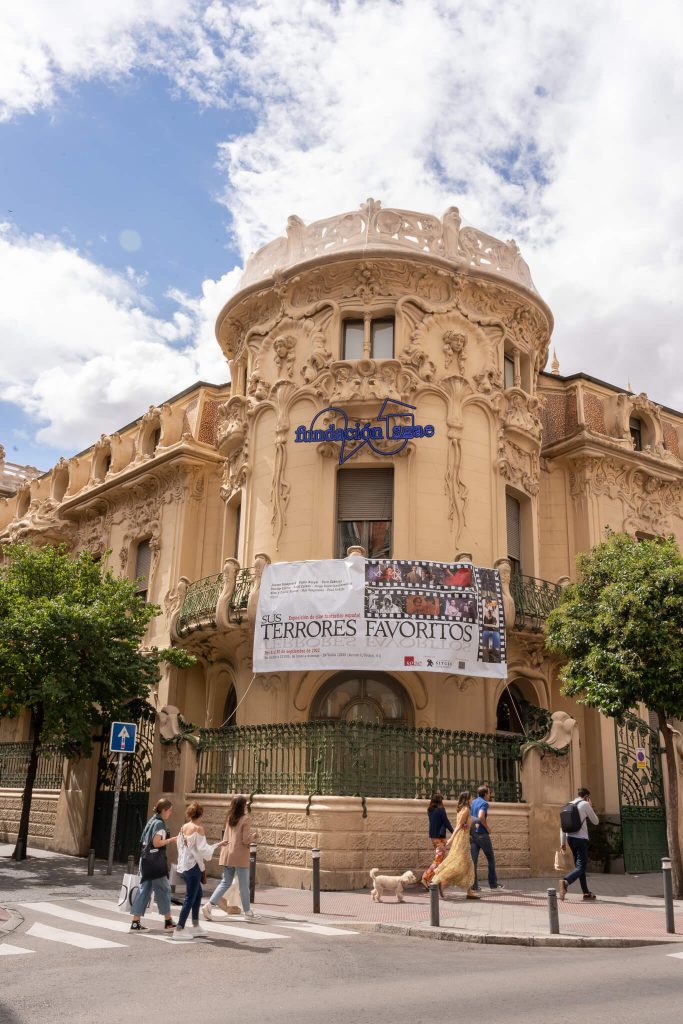
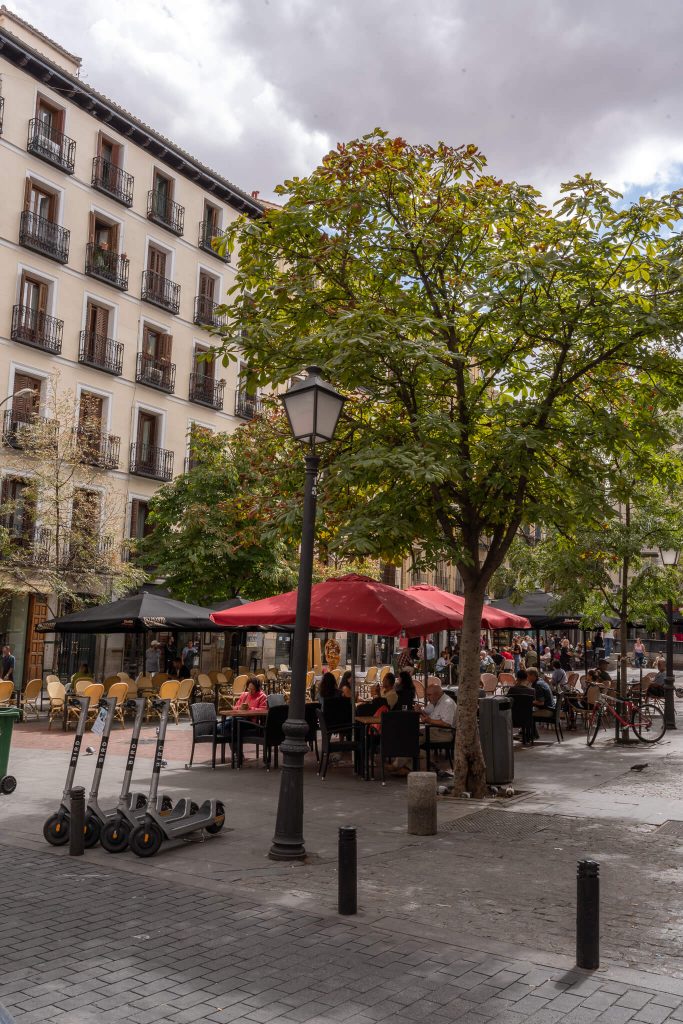
Salamanca – What to see in Madrid?
Salamanca is a quiet, green and elegant neighbourhood, home to luxury boutiques, the residences of the city’s wealthy and embassies. It is quiet, calm and classy, although a bit boring for us. A place that is definitely bustling with life is the Mercado de la Paz market, which we highly recommend you visit!
Parque del Oeste – What to see in Madrid?
A park where the people of Madrid who live nearby come in numbers with their pets. There is also the Rosaleda del Parque del Oeste rose garden. The cable car to Casa de Campo Park starts from this park. Along the park is Arguelles, followed closely by Chamberi. Both are great if you want to explore the non-touristic Madrid, meet the locals, and watch shoppers queueing at butcher shops and elderly greeting each other who have come to their favourite bar for a coffee or a glass of wine.
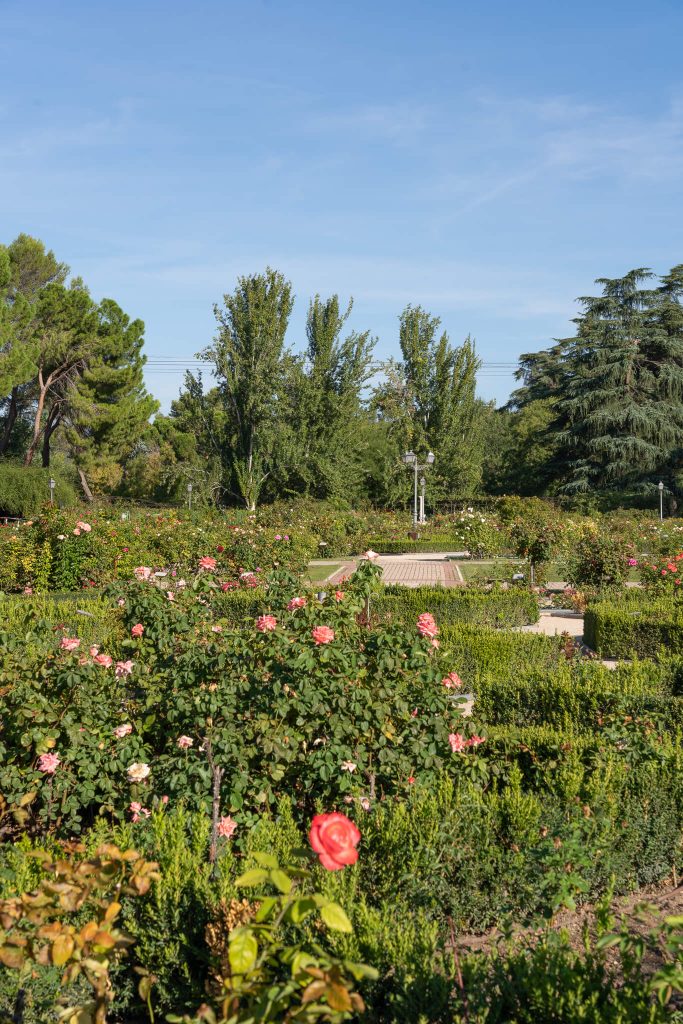
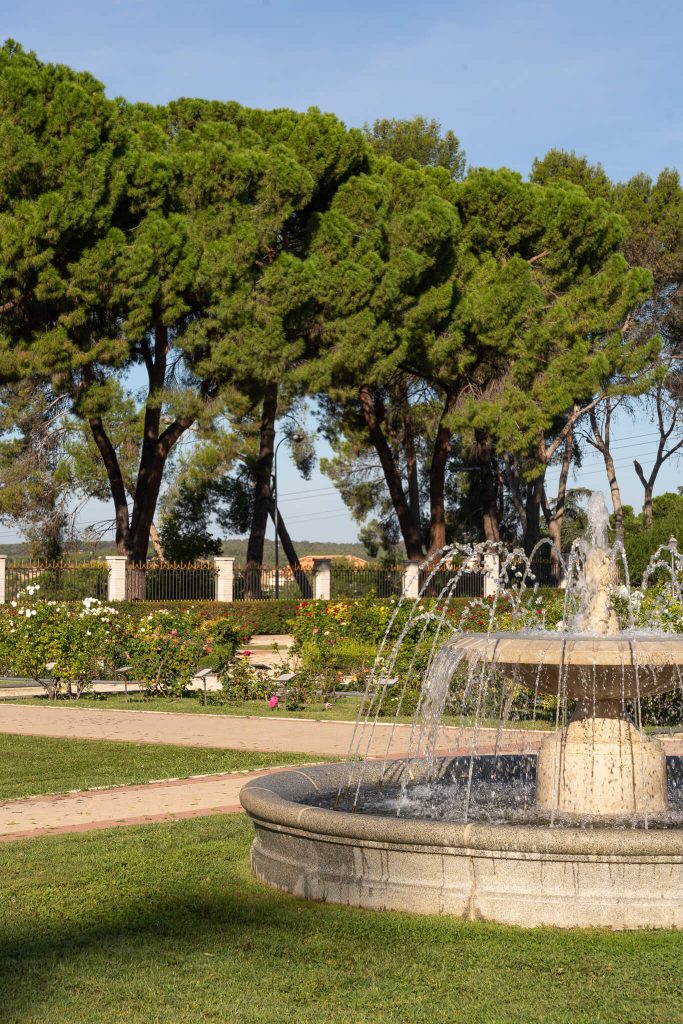
Arco de Moncloa and Faro de Moncloa – What to see in Madrid?
These two buildings are a great example of the classic “When Old Meets New”. Arco de Moncloa is a triumphal arch standing in the middle of a busy street. The Faro de Moncloa, which rises behind it, is a modern building, and its name translates to ‘Lighthouse’, it is a vantage point from which you can admire the panorama of Madrid. We skipped because we prefer vantage points where they serve drinks… and the terrace on Riu Plaza is as high as the 26th floor, so the views are probably comparable.
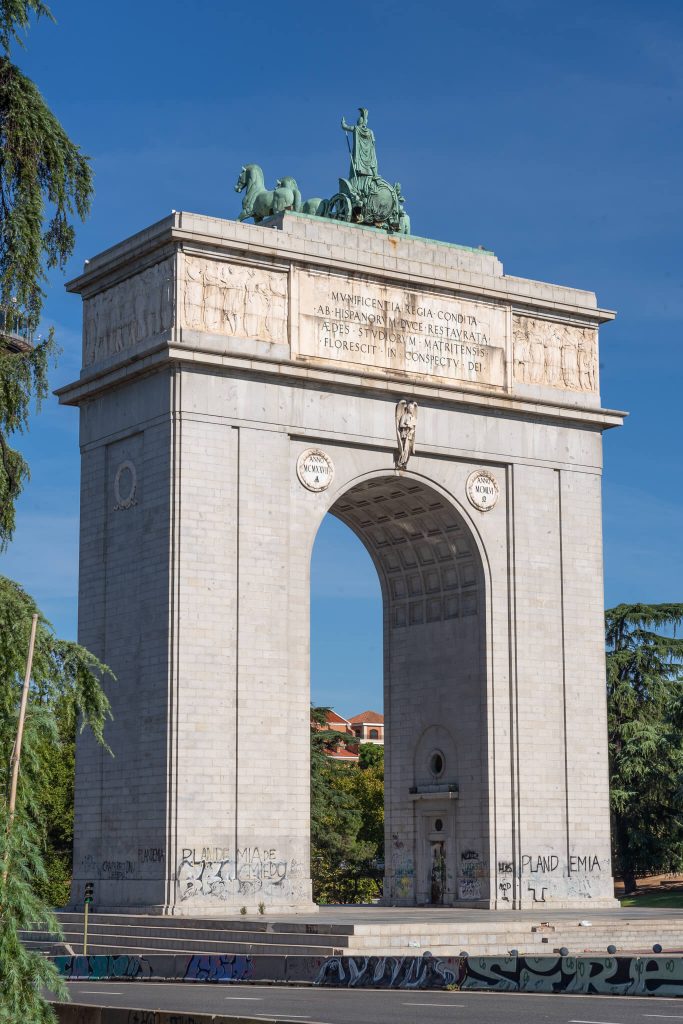
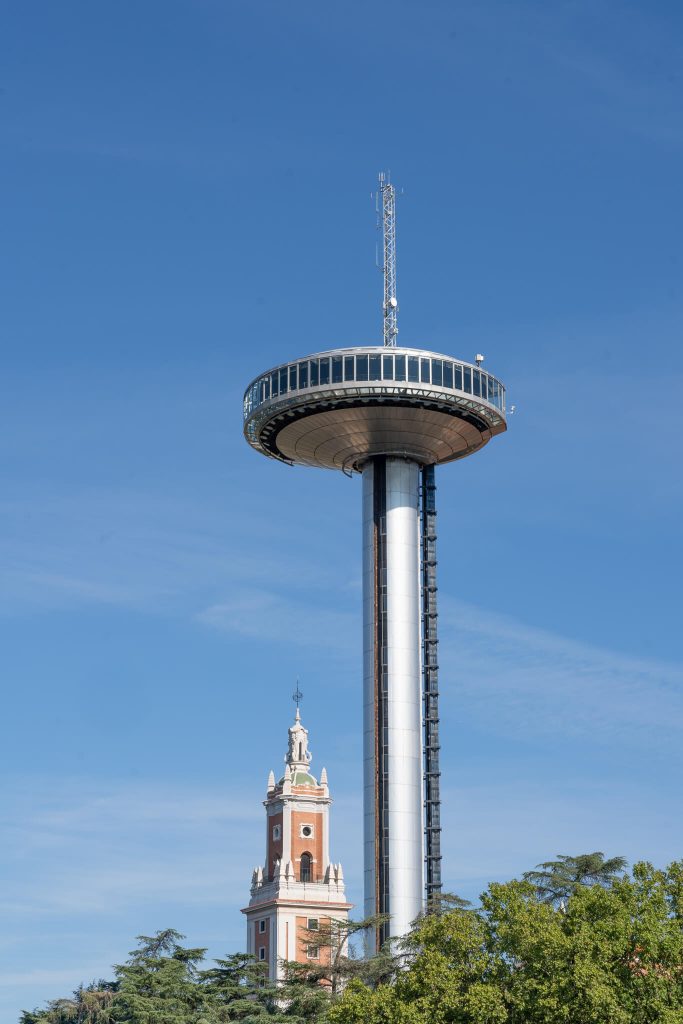
Where to eat in Madrid?
Central Spain, along with Madrid, is the only place from where we will not write a separate food guide because the food there made us very tired before visiting Madrid at the end-of-a-week tour. For this reason, we have not visited so many Spanish pubs or tried so many local dishes that we could create decent work. So we share a few spots below.
Casa Toni – if you are looking for a classic tapas bar, this is the address! Really tasty tapas and good prices, a bit old school decor and a typical tapas bar atmosphere.
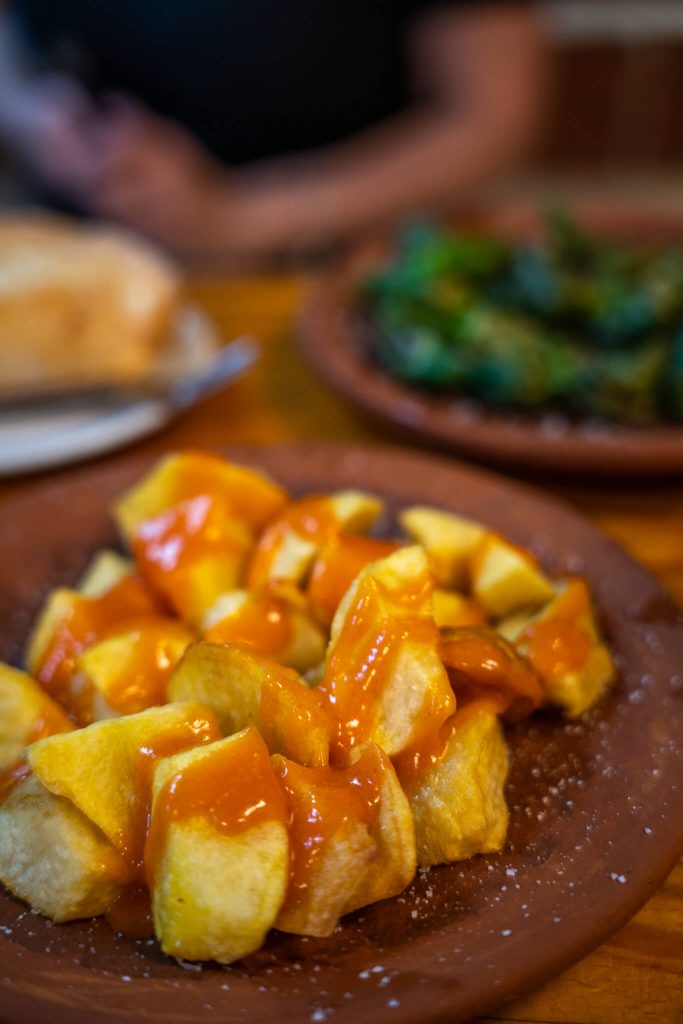
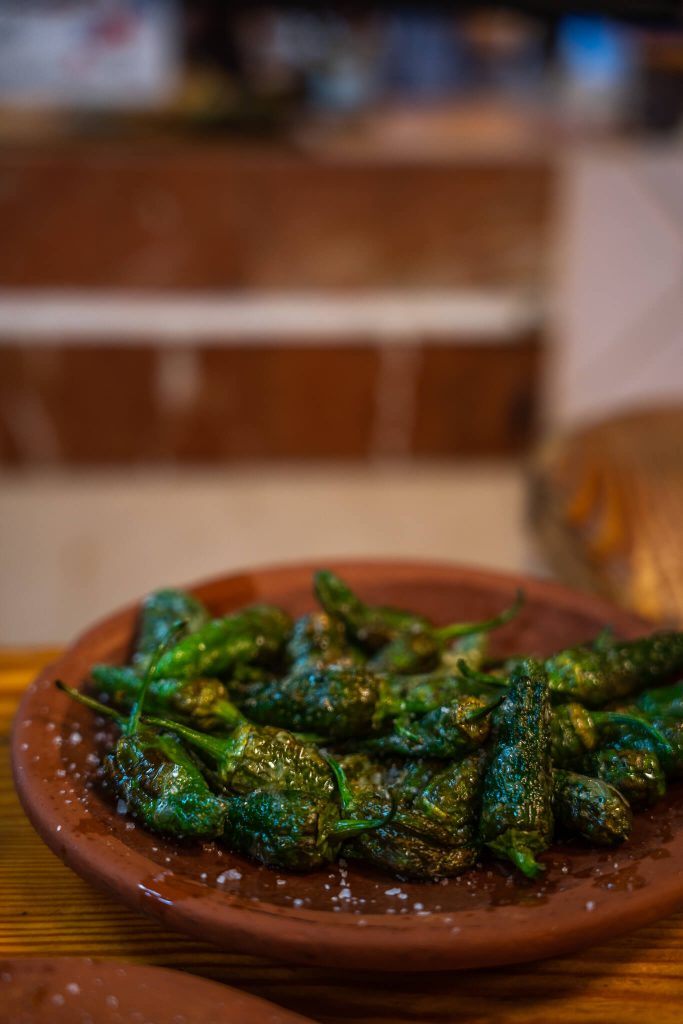
Takos Al Pastor – a place where there is always, but always, a queue. And no wonder, because these tacos are some kind of art! They cost 1-1.5e, are served at lightning speed and taste like heaven. We recommend the title Al Pastor and tacos with cactus.
Mo de Movimento – an ecological, sustainable pizzeria with extremely tasty pizza! The menu includes both classics and bold, intriguing positions. Spanish organic suppliers are thoroughly described on the menu and the dough is surprisingly made of wholemeal flour. If you have a taste for a really brilliant quality Neapolitan (one of the best we’ve ever eaten in our life!), Don’t think about it twice! They also bake such bread there that you drool just at the sight of it. We don’t know if it’s because of the Somebody Feed Phil Netflix series or just because it is simply popular, but you better have a reservation (we managed to stick without). Aaaah and be sure to take the cheesecake for dessert, just do it!
Toto – natural ice cream without any artificial ingredients, so, so tasty! It’s hard to believe it’s all-natural because they taste so intense and amazing. Salted caramel is heaven, and we can also recommend pistachio and lemon sorbet.
La Rollerie – if you find yourself having enough Spanish food (this is not our first time in Spain, but the central part of this country is characterized by heavy, fried food and mountains of meat) then stop by for breakfast at La Rollerie, a French-inspired bakery. They serve French croissants, but also goodies such as Benedictine Eggs.
Chocolateria San Gines – legendary place on the map of Madrid, crowded with tourists but also liked by locals. You will eat churros there, which are served with a cup of delicious hot chocolate for dipping churros. It used to be open 24 hours a day, but now with limited but long opening hours!
